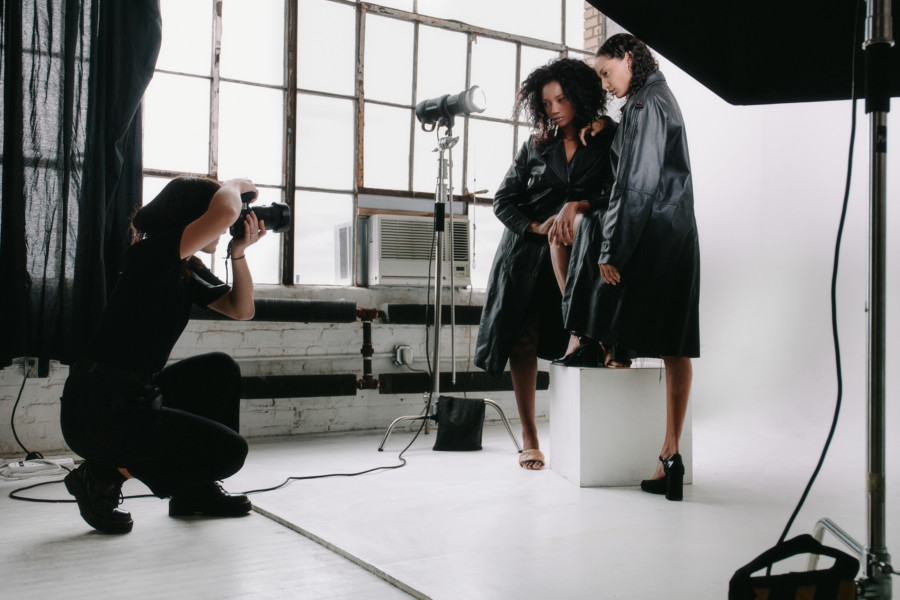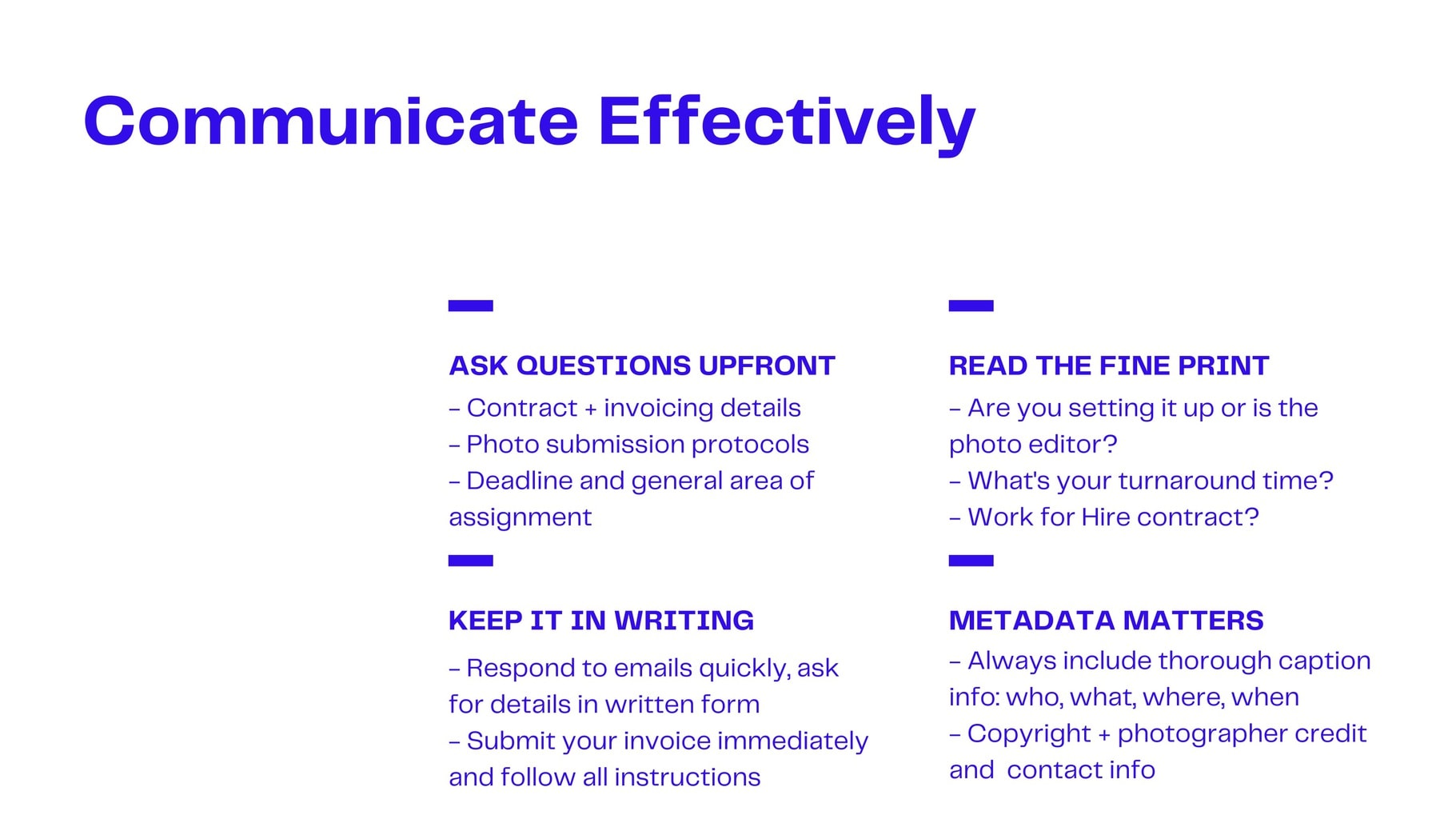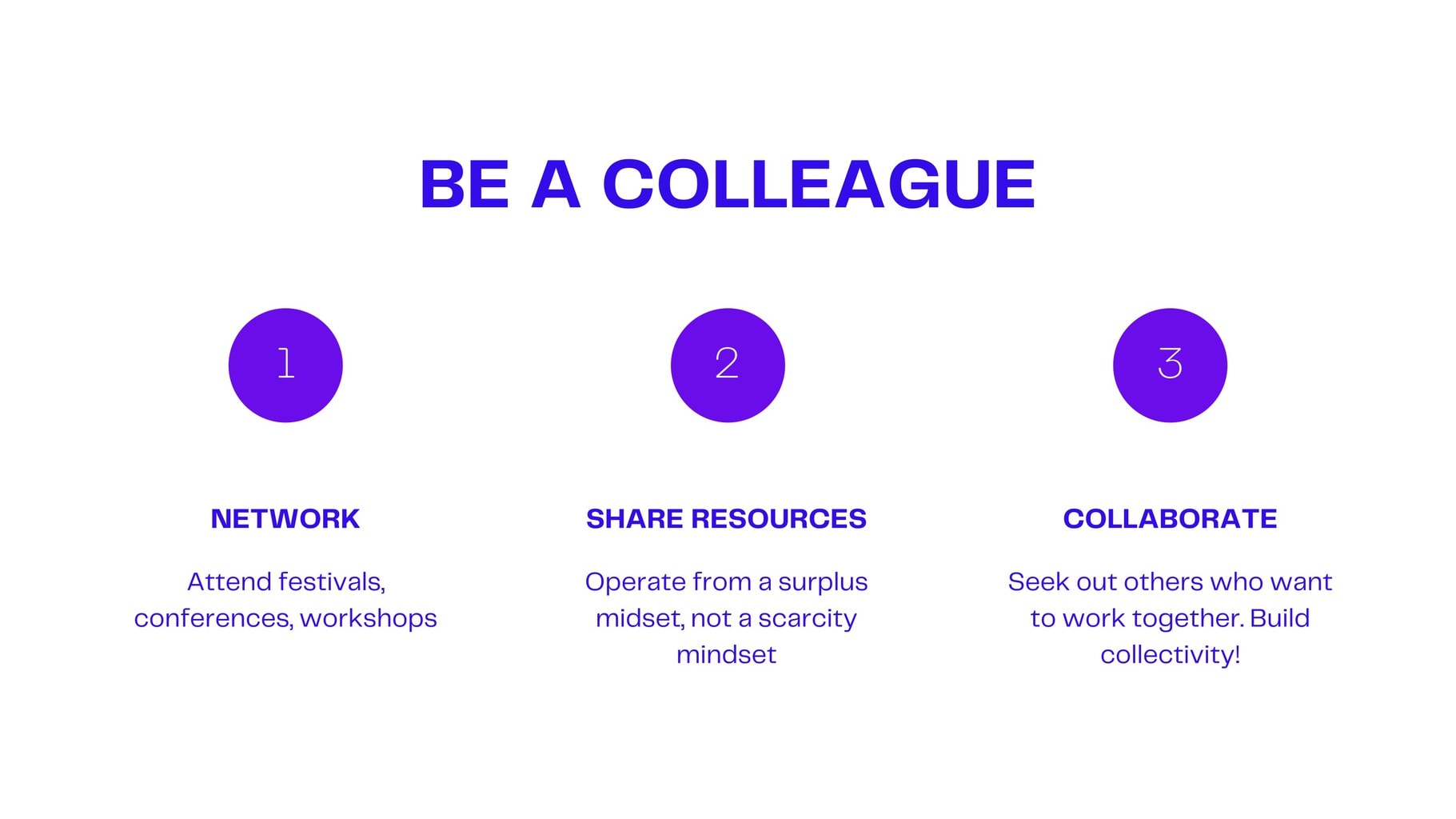Share
10 Tips and Takeaways for Freelance Photographers
Making a living as a freelance photographer can be tough, but it’s always rewarding. You have the freedom to work for yourself and pursue your pa...

Making a living as a freelance photographer can be tough, but it’s always rewarding. You have the freedom to work for yourself and pursue your passions. However, navigating the world as a freelance photographer can be tricky and you might find yourself with more questions than answers. Don’t worry – we’ve got you covered.
We recently spoke with Tara Pixley, an accomplished photographer, photo editor, educator and consultant with more than 20 years of experience. She’s worked for organizations like CNN, Apple, Newsweek, Huffington Post, NPR and more, and along the way she’s learned the ins and outs of what it takes to be successful as a freelancer. Now she’s devoted her time to educating and working with the next generation of visual storytellers as a professor and consultant.
Tara contributed to last year’s The Photographer’s Guide to Inclusive Photography and was also featured on our podcast. We’re confident you’ll learn a lot from her insights and experience. Read on for her top tips on how to navigate confusing contracts, find meaningful and exciting work, advocate for yourself, advance your career and more.
1. Communicate effectively
“Effective communication starts from the first email you receive, the first phone call you receive and goes all the way to when you’re asking ‘ where is my money?’“
Tara Pixley
For Tara, clear and effective communication is absolutely essential for success as a freelancer. Clear communication helps distinguish you from your competition by showing you’re easy to reach and attentive. It also helps eliminate any confusion during the initial stages of any contract negotiation. It starts by presenting yourself professionally and ensuring that you maintain that professionalism from that first email until you get paid. “I cannot emphasize this enough,” says Tara. Communication is key to your success as a freelancer.

2. Respond quickly
So what exactly does effective communication look like? Well for starters, you need to be responsive. “If someone is emailing you about a job opportunity, respond immediately,” explains Tara. Speaking from personal experience as a photo editor, she highlighted that projects are frequently under pressure due to strict deadlines. Editors are looking for someone who can respond quickly and get the job done. Of course, not everyone is inclined to drop everything and pull out their phone at the ping of a new email, but Tara is adamant that “this is a practice that you want to start honing” to ensure you give yourself the best chance of landing new assignments.
Even if you’re passing up a job, it’s critical to respond even if the project is not something you have the freedom to take on. That way you’ll stay on the editor’s radar and solidify your image as someone easy to contact and interested in work. Tara said she always starts her replies by expressing gratitude—“thank you for thinking of me, thank you for reaching out”—and ends with a nod to the future. “I look forward to working with you in the future, please keep me in mind.”
3. Ask questions up front
If you know the opportunity is something you want to pursue, then it’s time to make sure all the ducks are in a row before you seal the deal. “If it’s a yes, then you really want to ask questions up front.” Focus on the details and don’t hesitate to get into the nitty-gritty to clarify exactly what you’re responsible for.
“What is the deadline? What is my turnaround time? Do you need me to contact this person? Am I setting this up? Am I responsible for the studio, the production?”
Tara Pixley
Tara warns that “you can kind of screw yourself if you don’t ask the right questions.” She speaks from personal experience. Earlier this year, Tara accepted a portrait assignment that seemed pretty straightforward. She anticipated a short half-day of work with one of her normal clients, however, she neglected to ask where the event was taking place. After a few more emails and a quick look at google maps, Tara was blindsided when she discovered it was a 7 hour round trip to the site. Although she was able to resolve the issue and get paid for her time, the example remains a powerful reminder of why getting all the details in advance is crucial before taking on any commitment.
4. Don’t forget the simple things
It’s important to get big picture information like when, where, and how much money, but don’t forget to ask about the smaller details of the project, as well. Tara explains that you want to ask simple questions like “What are your photo transfer protocols? How do you want this transferred? Do you have your own FTP?”
If you’re working on a deadline, you’re going to want to know all of these things up front and then set up those systems in advance so you won’t be rushed on the back end.
5. Always get it in writing
With any professional negotiation and commitment, you need to ensure you have everything in writing so there’s a concrete paper trail. After a phone call, don’t forget to follow up and confirm everything that was agreed upon. Don’t hesitate to pick up the phone or reply to a DM, but “if you can get it in a more professional format, in writing, that’s always better,” says Tara.
6. Submit your invoice immediately
Different organizations will have different rules and instructions for your invoices. Make sure you get it right the first time. You don’t want to get in a back and forth where things might get complicated. “You want to make the Art Director and Photo Editor’s jobs so easy that they remember you,” explains Tara. That way you will be top of mind for the next time they need to hire someone.
7. Metadata really matters
“You need to put your credit, contact and copyright information in the metadata of all of your images.” This simple step can usually be done in a batch process by any of the popular photo editing platforms. Also be sure to include basic information about who is in the image, when it was taken, and contact information for model releases. These small steps will save you time in the future, and more importantly, save the Art Director and Photo Editor’s time too.
8. Be a colleague
“Nothing will ever make you as successful in this industry as being a colleague.”
Tara Pixley
The photo industry is (generally) a group of individuals working collectively to help each other grow. Don’t hesitate to safely network through conferences, festivals and workshops, and to operate from a surplus mindset, not a scarcity mindset. Tara spells it out pretty clearly “Don’t be in competition, be in collaboration, that’s how you’re going to succeed.”
It comes down to looking out for one another and being a positive influence in your community. Share your resources, share your ideas and share your experience to help make the freelance journey a little less lonely. Tara says, “If we are all looking out for each other then someone is always looking out for us.”

9. Be wary of work for hire contracts
Although work for hire contracts are not always ideal, sometimes it’s a necessary part of your career. Essentially, this type of contract is primarily concerned with your intellectual property and who owns the images. According to Tara, it’s a constant power struggle: “Typically with a work for hire contract, the organization is trying to do a rights grab on the intellectual property of the photographer.”
Always try your best to maintain ownership of your intellectual property. “Try to retain your copyright at all times,” explains Tara. After all, they’re your images.
There might be a few specific instances where someone is willing to cough up the big bucks to own all the rights to your images, but in general, you should try to push back and clarify the work-for-hire language in any contract you come across. Oftentimes, organizations are willing to amend or rework the language so that you maintain ownership of the intellectual property, but the organization is still able to use the images to accomplish exactly what they want. You can’t grant them full use of the photos, but in the end, it’s still your work. It’s a win-win.
10. Create a network
Tara recommends building a network of art directors, photo editors and other creative professionals that you can contact periodically to help promote yourself and your work. Keep in touch with them and stay on their radar, it just might result in your next big project. “It’s not an exact science, it’s really about building those networks and reaching out to them when you have stuff to offer,” explains Tara.
To stay up to date with Tara and learn more about her meaningful work with The Authority Collective, check out her website and be sure to download your free copy of The Photographer’s Guide to Inclusive Photography.


